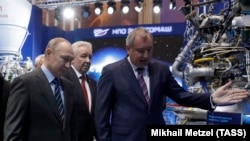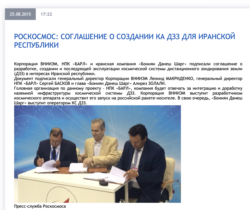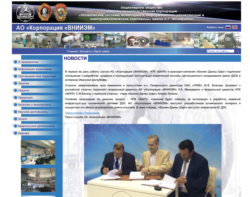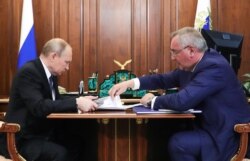Ahead of his meeting in Geneva with U.S. President Joe Biden, Russian President Vladimir Putin addressed relations with the United States in an interview with NBC News.
Russia was suspended from the G-8 (now G-7) group of world economic powers for its aggression against Ukraine, annexation of Crimea, alleged state-ordered poisonings in Europe, hosting cybercriminals, and meddling in U.S. elections in 2016.
In the NBC interview, Putin claimed there was no evidence of malicious actions by his country and dismissed the accusations as “fake news” and “nonsense.”
Putin was asked about a June 10 Washington Post report that Russia is providing Iran with advanced satellite technology that could give Iran’s military surveillance capabilities extending beyond the Persian Gulf, Middle East and Africa.
Citing unnamed U.S. and Mideast sources, the Post said this high-resolution camera technology, though marketed for civilian satellite use, would allow “continuous monitoring of facilities ranging from Persian Gulf oil refineries and Israeli military bases to Iraqi barracks that house U.S. troops.”
In the NBC interview, Putin denied the existence or any knowledge of a satellite deal with Iran: "It's just fake news. At the very least, I don't know anything about this kind of thing. Those who are speaking about it probably know more about it. It's just nonsense, garbage."
Putin’s claim is false, given that the Russian space agency Roscosmos announced such a deal with Iran on August 25, 2015.
Under Russian law, the country’s president has managerial power over Roscosmos, a state corporation, including the power to appoint or remove its staff and approve or reject its deals.
Roscosmos said that two companies under its supervision, VNIEM (the All-Russia Scientific Research Institute of Electromechanics) and NPK BARL (the Research and Production Concern BARL) had been tasked with creating the Kanopus-V satellite system “for remote Earth surveillance in the interests of Iran.”
NPK BARL was to build and adapt the Kanopus-V system’s ground infrastructure, while VNIIEM would build and launch the satellites, Roscosmos said.
While VNIIEM and Roscosmos label Kanopus-V a civilian system, they also say it is designed for “operational observation of specified areas of the Earth's surface” in the “interests of various agencies of the Russian Federation,” and for cartography.
Russian state-owned news agencies cited interviews with representatives of VNIEM and NPK BARL, who also confirmed the deal with Iran in 2015.
Iran also confirmed the arrangement.
In September 2015, the managing director of Iran’s Aviation Industries Organization, Manouchehr Manteghi, said Iran had signed a $21 billion contract with Russia to purchase space and aircraft equipment. The deal was reached during the annual airshow in Moscow that August, Manteghi said. Likewise, VNIIEM also said that the preliminary satellite contract was signed during that airshow.
Iran’s IRNA state news agency reported that the initial agreement was signed “in the presence of Russian Deputy Prime Minister Dmitry Rogozin and Federal Space Agency Director Igor Komarov,” and that the Russian side expected the first satellite for Iran to be launched by the end of 2018.
Putin appointed Rogozin the head of Roscosmos in May 2018. Rogozin reports directly to Putin during biannual meetings in the Kremlin, as did his predecessor, Igor Komarov.
Iran’s Information Technology and Communications Minister, Makhmud Vaezi, repeatedly mentioned the satellite contract with Russia in reports regarding his multiple visits to Moscow.
Vaezi said that “among the achievements” of his August 2016 trip to Moscow was an agreement reached with Russia on Iran’s National Remote-Sensing Satellite. “[A]s the project is very critical, we predict building of the satellite to last two years,” he told reporters.
On December 13, 2016, Vaezi told Iran’s Mehr News state news agency that the satellite system deal with Russia had been finalized “and work on its construction will begin tomorrow.”
According to the Russian government contracts system, Roscosmos has awarded VNIEM five contracts totaling 43 billion rubles (nearly $600 million, according to the current exchange rate).
They include a 8.3-billion-ruble ($115 million) contract in December 2016 to build satellite systems and a 7.5-billion-ruble ($104 million) contract in June 2020 to build “4-6 Kanopus V satellites.”
According to a November 2020 article in the Russian journal National Defense, NPK BARL said its space surveillance system is equipped with capabilities “far beyond the needs of agricultural sphere” to satisfy clients like the Russian defense and interior ministries and foreign clients.
The Federal Security Service (FSB), Russia’s main security agency, is listed along with the defense and interior affairs ministries in the “partners and customers” section of NPK BARL website.
In April 2018, the U.S. sanctioned NPK BARL for providing assistance to Iran’s nuclear development program.
In July 2020, the Aerospace Division of Iran’s Islamic Revolutionary Guard Corps (IRGC) released surveillance images of what it called a “multi-purpose” satellite launched in April that same year. The images detailed a military base of the U.S. and its allies in Qatar, which Iran vowed to destroy.
The satellite launch confirmed that the IRGC has been secretly running its own space program parallel to the Iranian Space Agency.
“If fully realized, the deal with Russia would represent a significant boost for an Iranian military establishment that has struggled in its own attempts to put a military reconnaissance satellite into orbit,” The Washington Post reported. “After several prominent failures, Iran last year successfully launched an indigenous military satellite dubbed Noor-1, but the spacecraft was quickly derided by a senior Pentagon official as a ‘tumbling webcam.’ ”
Gen. Frank McKenzie, the commander of U.S. Central Command, told VOA on Tuesday that he was not concerned about Russia potentially providing Iran with a Kanopus spy satellite, because “you really can't do much with it. There's a vast amount of infrastructure that goes into taking an image from space, turning it into an actual target that someone could strike."
"[it would probably allow them to see something the size of a school bus, which is not going to be particularly concerning to us. In fact, there's commercial imagery out there right now that is much better than that," McKenzie said.








